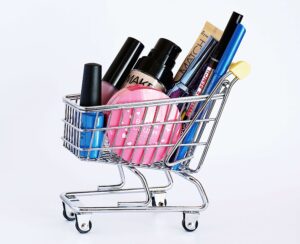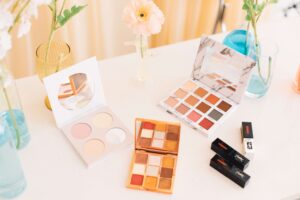Wellness in Beauty

In the vast and alluring world of beauty, where trends are ever-evolving, consumers are increasingly aware of the importance of scrutinizing product labels. While many cosmetics brands strive for transparency and safety, some still lag behind, continuing to use ingredients that are potentially harmful. In this exposé, we shed light on toxic makeup brands to avoid, emphasizing the need for conscious choices in your beauty regimen.
1. L’Oréal: A Giant with Hidden Risks
L’Oréal, one of the beauty industry’s giants, has faced criticism for its use of questionable ingredients. Parabens, known endocrine disruptors, have been found in several L’Oréal products, potentially interfering with hormonal function. Additionally, some products contain formaldehyde-releasing preservatives, a known human carcinogen.
While L’Oréal has made strides in removing certain harmful ingredients, it’s crucial for consumers to remain vigilant and check product labels. Opting for brands with a clear commitment to clean, safe formulations is a proactive step toward healthier choices.
2. Maybelline: The Cost of Glamour
Maybelline, a household name for affordable and trendy cosmetics, has also come under scrutiny for its use of potentially harmful ingredients. Some Maybelline products contain talc, a mineral that, when not properly refined, may be contaminated with asbestos—a known carcinogen.
To make informed choices, consumers must prioritize brands that invest in rigorous testing and transparency. Opt for talc-free alternatives to reduce potential health risks associated with this common cosmetic ingredient.
3. Revlon: Pretty Faces, Hidden Dangers
Revlon, another widely recognized brand, has faced criticism for its use of harmful chemicals, such as butylated compounds like BHT and BHA. These synthetic antioxidants have been linked to endocrine disruption and potential carcinogenic effects.
As consumers, we must demand accountability from beauty brands, urging them to prioritize the health and well-being of their customers. By choosing brands committed to cleaner formulations, we can avoid exposing ourselves to unnecessary risks.
4. CoverGirl: The Dark Side of Glam
CoverGirl, celebrated for its accessibility and wide range of products, has also been implicated in the use of potentially harmful ingredients. Some of its formulations contain parabens and synthetic fragrances, both of which can trigger skin irritation and allergic reactions.
Navigating the beauty aisle requires a discerning eye, and consumers should prioritize brands that prioritize ingredient safety. Opt for alternatives that embrace natural fragrances and exclude controversial preservatives to safeguard your skin’s health.
5. Clinique: When Hypoallergenic Falls Short
Clinique, often lauded for its allergy-tested and hypoallergenic products, has faced criticism for its inclusion of potential allergens and irritants. Some products contain synthetic fragrances and preservatives that can cause adverse skin reactions, especially for those with sensitive skin.
The term “hypoallergenic” doesn’t guarantee a product’s safety for everyone, and it’s essential to scrutinize ingredient lists. Choose brands that prioritize clean, non-irritating formulations to ensure your beauty routine remains gentle on your skin.
6. Neutrogena: A Brand with Clouded Skies
Neutrogena, a go-to for many skincare enthusiasts, has faced backlash for some of its makeup formulations. Some Neutrogena products contain potentially harmful ingredients, including synthetic fragrances and preservatives, which can lead to skin sensitivities and allergic reactions.
Educating oneself about ingredient safety is paramount in making empowered choices. Opt for makeup brands that prioritize transparency and use natural fragrances and preservatives to minimize the risk of adverse skin reactions.
7. Estée Lauder: Glamour with Controversy
Estée Lauder, a luxury brand synonymous with glamour, has been under scrutiny for its use of controversial ingredients. Some products contain polyethylene, a plastic microbead that poses environmental concerns, as well as potential harm when absorbed through the skin.
As responsible consumers, it’s crucial to consider the broader impact of our beauty choices. Opt for brands that are committed to eco-friendly practices, using alternatives to harmful microbeads and minimizing their environmental footprint.
8. Yves Saint Laurent (YSL): Fashion with a Price
YSL, a symbol of high-end fashion and luxury, has faced criticism for its makeup formulations. Some YSL products contain potentially harmful ingredients such as talc, which, as mentioned earlier, may be contaminated with asbestos.

In the pursuit of beauty, consumers must prioritize brands committed to safety and transparency. Choose talc-free alternatives to minimize potential health risks associated with this common but potentially hazardous ingredient.
In the quest for beauty, consumers must remain vigilant about the products they choose to adorn their skin. While the allure of well-known brands is undeniable, it’s crucial to scrutinize ingredient lists and prioritize health and safety. The beauty industry is evolving, and consumers play a pivotal role in driving change by demanding cleaner, safer formulations. By steering clear of toxic makeup brands and embracing those committed to transparency and ingredient safety, we can pave the way for a healthier, more conscious beauty culture. Let your beauty routine be a reflection of both your glamour and your commitment to well-being.

